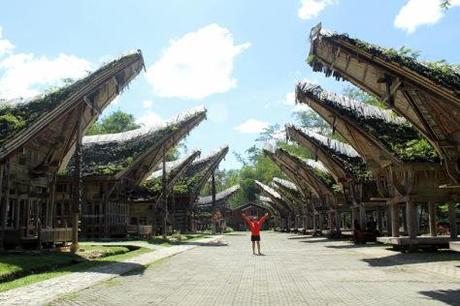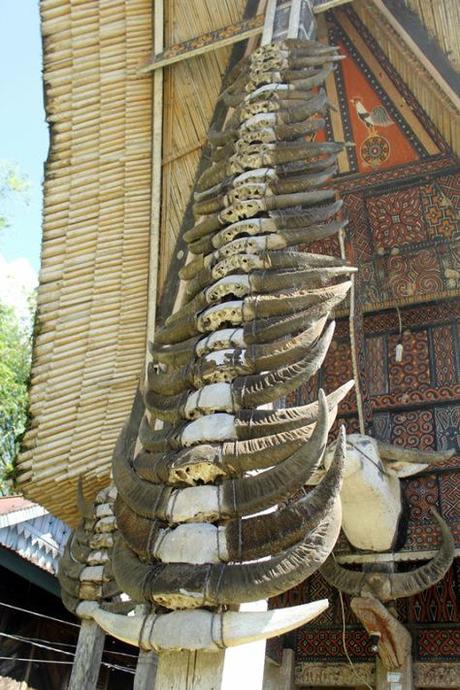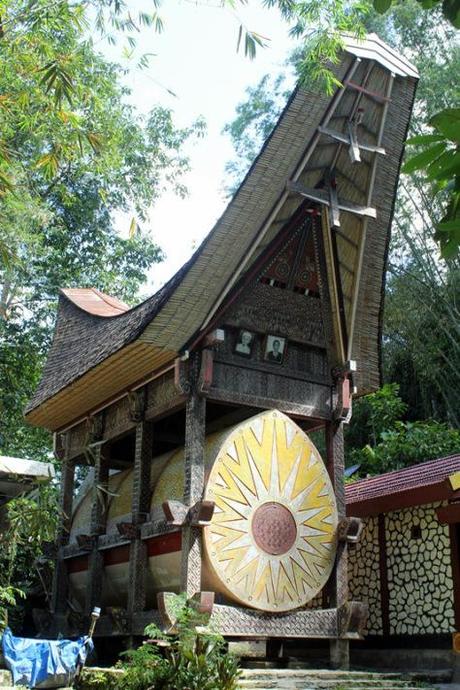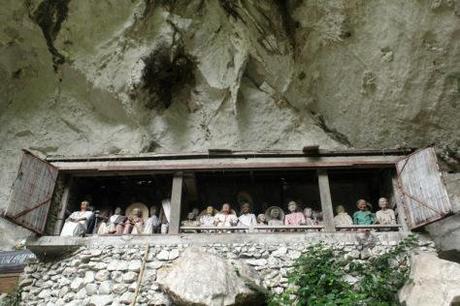Hanging coffin is a unique funeral tradition which could be mostly found in Asia, such as China, the Philippines and Indonesia. Instead of burying the coffin under the ground, people of Bo in China, or Sagada in the Philippines, and Toraja in Indonesia put the coffin hung the coffin hundreds feet up the side of the cliff. Those people believe that the higher the coffin placed, the dead will be conferred an honor.
Day two in South Celebes, I and some friends was given the opportunity to visit Toraja regency. Eight hours riding on the night bus, we were dropped at the city. Our one day Toraja tour would be visiting some traditional village which still hold the hanging coffin tradition.
After renting two motorcycle, we started our journey, passing through the road along Rantepao-Makale. There lies some traditional villages which are reached by following the roadside sign. More or less, here are the map:

Map taken from Biru Langit’s property on: http://b1rulang1t.blogspot.com/search/label/sulawesi.
As I read, there are some must visit site stretched along the way from Rantepao to Makale.
A. Traditional village:
- Rante Karasik-the megalith funeral village
- Buntu Pune-historical site which witnessed the unification of all Torajan tribes to fight against the imperialist
- Ketekesu-traditional village with 500 years old cemetery

Londa hanging coffin cemetery. At the right side we can see cave mouth which leads to some coffin kept inside
B. Traditional cemeteries:
- Londa
- Lemo
- Kambira the baby grave yard

Lemo, another hanging coffin decorated by Tau-Tau statue
C. Natural attractions:
- Tilanga natural pool
However, due to the limited time we had, we only visited these four sites, Londa, Lemo, Buntu Pune, and Ketekesu. And here are some facts I got about this land of kings.

Beside Buffalo horns, there found also some pig teeth hung in front of tongkonan
- Tongkonan as traditional house is used not only for staying but also for keeping the body of family who has just passed away.

- Tongkonan which is built facing the north reflects traditional belief that Torajan ancestor come from the far north and everyone’s spirit after death will gather there.
- Tongkonan before was built only by the noblemen
- Buffalo horns set in front of the house shows how wealthy the family member is. The more number they have, the higher their status in society.

- Rambu Solok is Torajan traditional death ceremony which becomes world most sophisticated death ceremony ever. The family has to hold a big celebration to give the last honor to the death by slaughtering massive numbers of pig and buffalo which would be attended by hundreds even thousands of guests.
- There are three ways of the funeral in Tana Toraja. The coffin is hung on some block, or the coffin is inserted into a cave provided at the highest of rocky cliff, or they bury the coffin inside a carved tomb.

- A dead baby whose teeth hasn’t been grown yet, the body is buried inside a a hole in Tarra tree. The baby funeral is located in Kambira district. Tarra is chosen because it has a lot of sap. The sap is believed as the substitution of mom’s breast milk for the dead in order to let the future born will survive and be healthier.
- People who visit the hanging coffin will be welcomed by Tau-Tau, a wooden statue which impersonating the description of the dead men who are buried there. This also means to reflect the social status of the dead men. Local believes that Tau-Tau will ever-guard and ever-protect the living.
- Family and relative who attend the funeral ceremony has to wear dark outfits as the symbol of death in order to show the moan and deep condolence.






